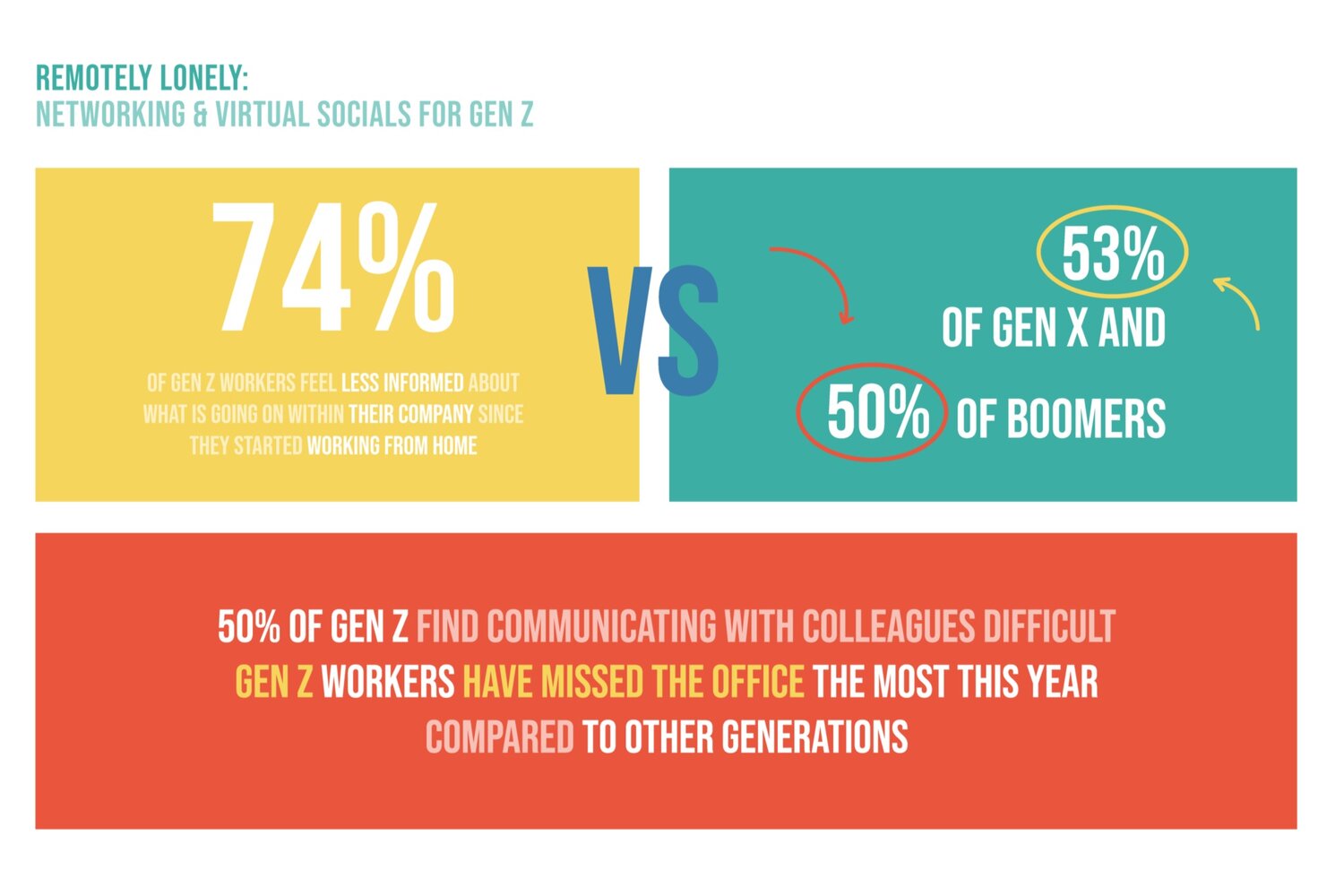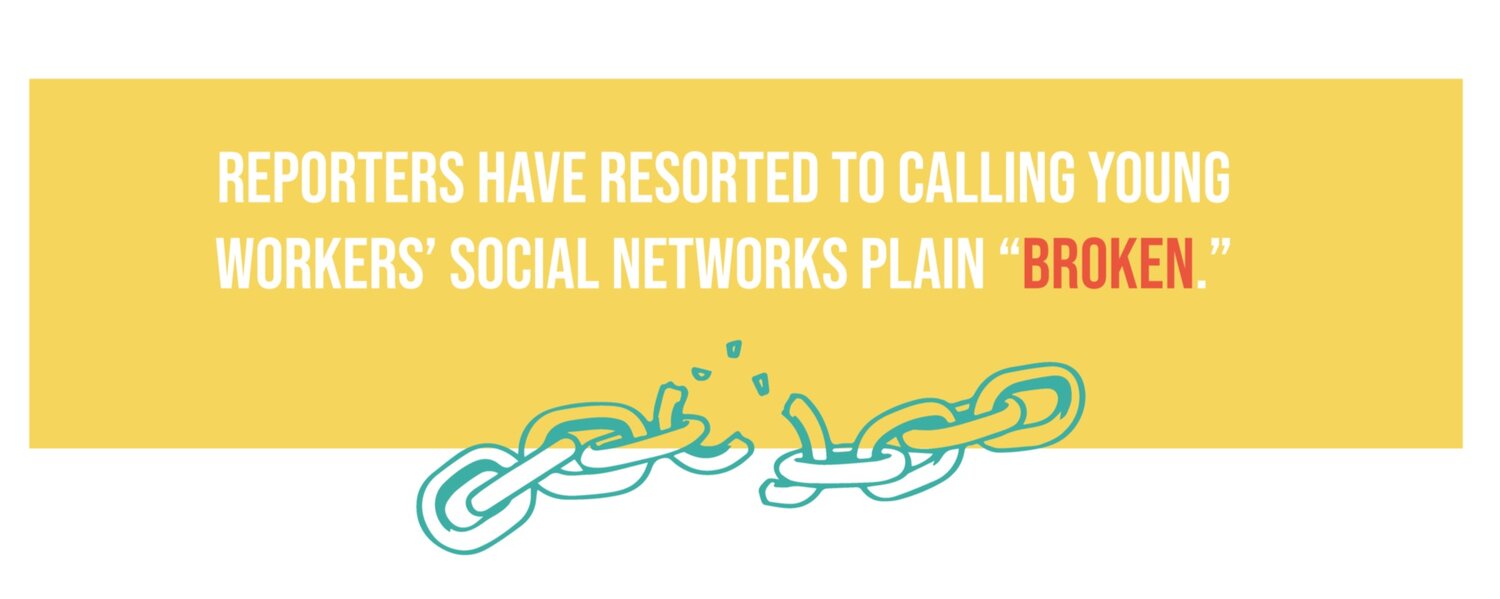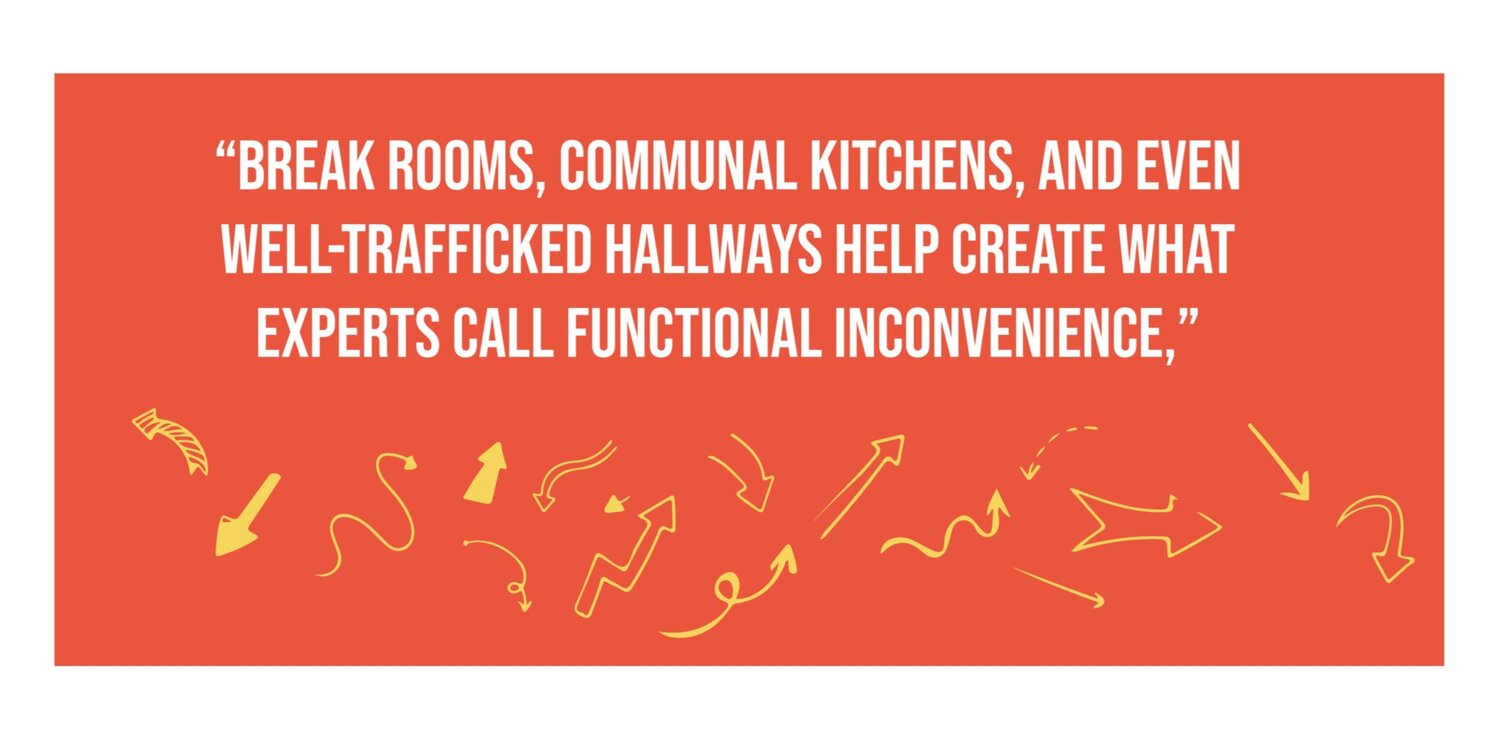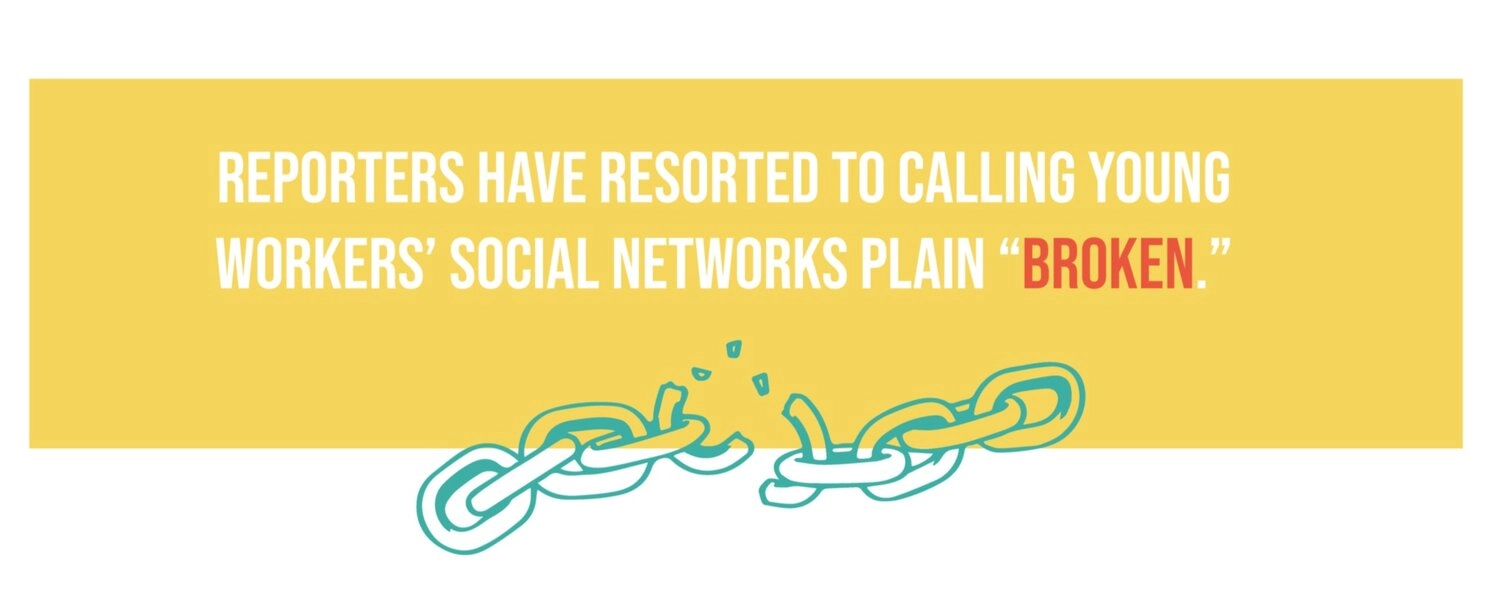Remotely Lonely: Internal Networking & Virtual Socials For Gen Z
This is Part 2 of our blog series: “On the Remote Road: Insights Into Young Professionals’ WFH experiences.” It’s no secret that working remotely has...
by Reza Farahani - July 20th, 2021
There's this neat concept called socialization that can explain so many of your idiosyncrasies. Your filler words, how you hold a fork, your use of formalities, or even your tendency to talk to yourself rest upon years of learning. In fact, you've been absorbing social norms from those around you your whole life, often without even realizing it.

According to Dr. Nicki Lisa Cole, "Socialization is a process that introduces people to social norms and customs," and it can happen at home, school, church, or even work. Socialization at work can make or break an employee's sense of belonging in an organization, define their productivity levels, and fast-track them up (or down!) the career ladder.
However, it's much harder to absorb social norms and customs from your peers while slouching in a makeshift office at home.
And it's challenging for a Gen Z worker in that context to pick up the insider knowledge, skillset, and life lessons that will help them flourish. Consider that 74% of Gen Z workers feel less informed about what is happening within their company since they started working from home following the pandemic this year, versus 53% of Gen X and 50% of Boomers.
Half of all young professionals find communicating with colleagues difficult and have trouble getting status updates. And while many assume that younger employees are coasting through these screen-obsessed times, workers under 35 have missed the office the most. Lack of socialization is a common problem even for companies that have been remote for years.
There are two critical components to this. On the one hand, Gen Z professionals are more likely to be the newest employee around, both at your Org and in their field. In other words, they have few achievements, connections, or workplace memories to fall back on while working from home. That infamous Christmas party? They weren't there. That big win for the company two years ago? They don't know what you're talking about.
That helpful accountant from the consultancy firm? Forget it. On the other hand, young professionals crave socialization, both to advance up an increasingly rickety career ladder and to find work friends who will bring them joy. But while up to 85% of all jobs are filled by networking, 95% of people believe in-person meetings help build better business relationships.
That makes networking primordial yet hard to enact online.
Meanwhile, more so than for any other generation, the happiness of younger employees "seems intrinsically linked to the quality of the relationships they foster [at work]." Yet research indicates that over 80% of Gen Z professionals felt lonely and alienated at work before the pandemic.
Reporters have resorted to calling young workers' social networks plain "broken." It is ironic that the employees who crave the most humanity, emotional connection, and friendship at work have the least of it. And ultimately, it's all too obvious that Gen Z workers desperately need the networking and social interaction that will help them (as well as your Org) get ahead.

About Internal Networking
"Break rooms, communal kitchens, and even well-trafficked hallways help create what experts call functional inconvenience," Amanda Mull writes in the Atlantic.
You get to know people because you need to pile into elevators together, take turns using the microwave, and move across space together. Over time, quick hallway encounters with colleagues build a sense of belonging and trust across departments and disciplines. This kind of internal networking boosts job satisfaction and "embeddedness," or the desire to remain with the same employer. Research shows that teams who network with each other benefit from improved internal communication, as well as increased motivation, productivity, and engagement. And according to one study, encouraging your team to network with each other will reduce your turnover rate by a whopping 114%.
But new hires, especially young workers joining the team remotely, find it hard to network with peers. As a result, they risk remaining "unknown quantities." And unknown quantities don't become outstanding workers, treasured colleagues, or confident leaders.
To quote Sean Blanda, when you're a Gen Z employee, you desperately need "the serendipitous fortune of sitting in on the right meeting, attending the right happy hour, or earning the respect of the right observer."
"In hindsight, it's like... 'Oh wait, I might never talk to them again because I didn't take that first step and reach out.'"
— Hannah
Hannah, who interned as a software developer at RBC last summer, says she regrets not getting to know her colleagues better, mainly because they were so approachable. "I think I should have initiated more coffee chats," she says, "but I was too shy and didn't know what to ask sometimes."
Without those hallway and water cooler chats to go off of, young professionals can struggle to find conversation starters. "In hindsight," Hannah adds, "I'm like, 'Oh wait, I might never talk to them again because I didn't take that first step and reach out.'"
Similarly, Emily, who joined Arrive as a digital writer last year, shares that she only got to know three to five colleagues during her internship. "It can be intimidating to reach out to people not in your immediate circle," she said with a smile. "Are you going to just set up a one-on-one Zoom call with them?"
In general, it's difficult for young professionals to network when they're keenly aware of how valuable their peers' time is. Moreover, initiatives like Slack Donut or 10,000 coffees at work were terrific, Emily notes, but often under-utilized.
"Obviously, you can't force connections, but maybe that could have been incentivized somehow," she adds.
So, what can you do as a remote leader to boost internal networking? You can start by name-dropping peers your Gen Z employees should connect with, alongside two or three fun facts and topics they could bring up. It only takes a minute to write a note saying, "Hey, you should talk to Alicia because she can help you with report writing and accounting skills. And by the way, I think she just got a puppy!"
This helps your junior team member overcome potential reservations to take full advantage of remote work's flexible scheduling.
Beyond this, consider writing experienced colleagues a note encouraging them to reach out to your Gen Z people or setting up group chats connecting your newest employee with them directly. Remember, by breaking the ice for them, you're not just laying the groundwork for your younger peers' future success but helping them thrive at your Org today.
"By breaking the ice for them, you're not just laying the groundwork for your younger peers' future success, but helping them thrive at your Org today."
In the long run, you should start investing in a culture that continuously allows for and encourages internal networking. Tools like Slack Donut aren't enough on their own; they require a company-wide buy-in. That means explaining your goals, how inter-generational networking will help you achieve them, and your roadmap.
Supporting projects could include a list of icebreaker activities. In this channel, your Gen Z workers can share their networking insights or a spreadsheet outlining your busiest colleagues' networking preferences (and pet peeves) that younger peers can consult.
As Emily suggested, you should also reward the busy bees who make time to get to know each other better — whether through a celebratory announcement at your next stand-up or a points-based system on Slack. If anything, help your team understand that internal networking will help boost their productivity, engagement, and general know-how. Because without these coffee chats, Gen Z employees can't expand their skillset.
"They have no context for how to do all of the messy office-ready skills like building consensus, having productive disagreements, and advocating for their ideas." And frankly, that's just alienating.

About Virtual Socials
As we discussed in our first blog, your youngest employees may also be the loneliest. They are more likely to live alone, stranded away from their hometown networks and families, or too busy hustling to take proper breaks. Knowing that loneliness kills more than smoking or obesity, you should think of your team's splintered social life this year as a mental health crisis in its own right.
Although the remote work and COVID-19 cocktail doesn't taste the same as mere work-from-home, tackling loneliness should be on every remote manager's to-do list.
Think about it this way; according to an Oxford University study, happy workers are 13% more productive. One researcher of job embeddedness reports, "Everything can't just be work all the time." Instead, "people need to interact with each other." With this in mind, teambuilding activities give young employees a reason to stay and grow in their position and the energy needed to maintain peak productivity.
Sadly, connecting with others over Zoom or asynchronously is much more challenging. There are none of the functional inconveniences we find in the office, meaning social interaction doesn't happen naturally. And this makes a person's vibes much harder to capture without virtual happy hours.
As an intern at the United Nations last summer, Jad met up with colleagues in person after weeks of primarily asynchronous remote work. That led to some exciting discoveries.
"Well, some colleagues I thought were women turned out to be men," he told me. But it's not just about some (frankly hilarious) confusion. "I did feel like some people were much friendlier than I had imagined in my head," Jad said, nodding. "It was revealed that they are approachable."
I can't think of a more bittersweet statement than, "They were approachable all along."

How many questions go unasked yearly because younger employees need to be adequately socialized into their distributed team? Indeed, those numbers could be reduced if remote leaders made more time for proper virtual socials.
Tess, who's been interning at the Carter Center, says she attends Friday water cooler meetings where everybody talks about their day. Unfortunately, the large group size and restricted topic matter make it hard to have a "naturally flowing conversation," with people patiently waiting for their turn to unmute themselves. As a remote manager, you have many options to spice up your teambuilding activities and virtual icebreakers.
Every week, you could randomly select five people from across the company and give them Uber credits so they can grab lunch together. For extra fun, give your team access to conversation starters and icebreaker activities, like a work-from-home bingo, This or That game, or a Virtual Scavenger Hunt.
Having enjoyed games with her remote peers, Emily says, "It's the better way to do it" rather than "everyone just sitting around and staring at each other and interrupting each other" in company-wide calls.
Another way to facilitate real interaction would be to pair up peers from different teams to participate in a fun learning project. As a software developer, for instance, Hannah got to flex her coding skills at RBC in a "mini-hackathon" project while onboarding.
"It was short," she says, "but it got us talking a lot to one other person at least, so that was pretty cool. It helped me feel more comfortable at the company and around my co-workers."
Similarly, Harneet, who recently joined a health Org in Hamilton, says a competition or game can "keep the team stimulated and engaged" in new ways.
"It brings out other parts of your personality that don't get to come out in a work setting where you're just focused on the latest project or arbitration," she notes.
That's precisely why making space for virtual socials can redefine your team collaboration.
"Games can bring out other parts of your personality that don't get to come out in a work setting, where you're just focused on the latest project or arbitration."
— Harneet
Either way, do not assume that younger peers will organically meet up together online. Tess, who joined the Carter Center in a cohort of 40 interns, says it didn't happen for her.
"I would have been nervous to take the initiative," she says, "because I didn't want the others to think… Who's that intern?" Shrugging, she adds, "I didn't want to be overly ambitious, but it would have been nice if they had that for us."
Virtual socials and internal networking shouldn't require Gen Z employees to bend over backward to happen, especially considering that both increase your team's productivity, engagement, and happiness at work.
By making space for socialization and dismantling the roadblocks preventing it, you're setting up your younger workers for professional success in the future and right now within your company.
Recommended Posts
Young, Fun, & Remote: How Gen Z Is Bringing Fun to Work
Blog Articles
Happy Hires: What Matters When Onboarding Gen Z Remotely
Blog Articles
Search...
Product
GoCo
Resources
Articles
eBooks
Webinars
Customer Stories



